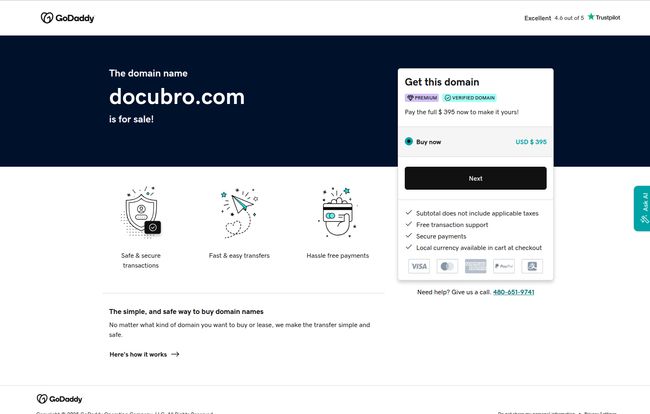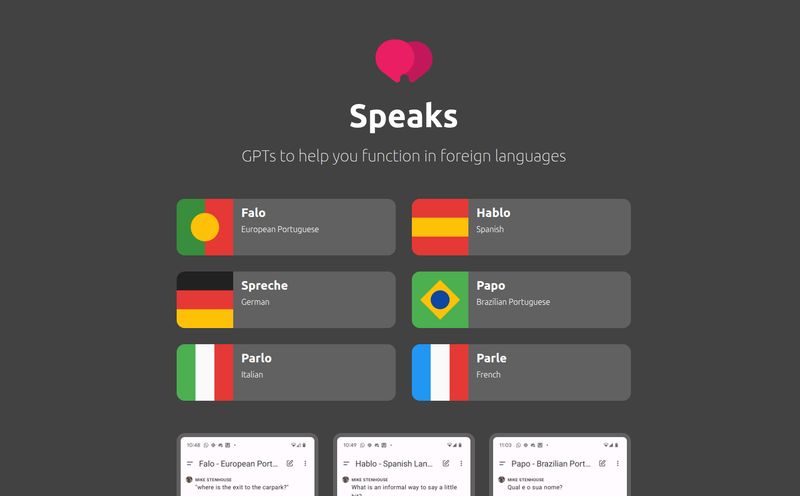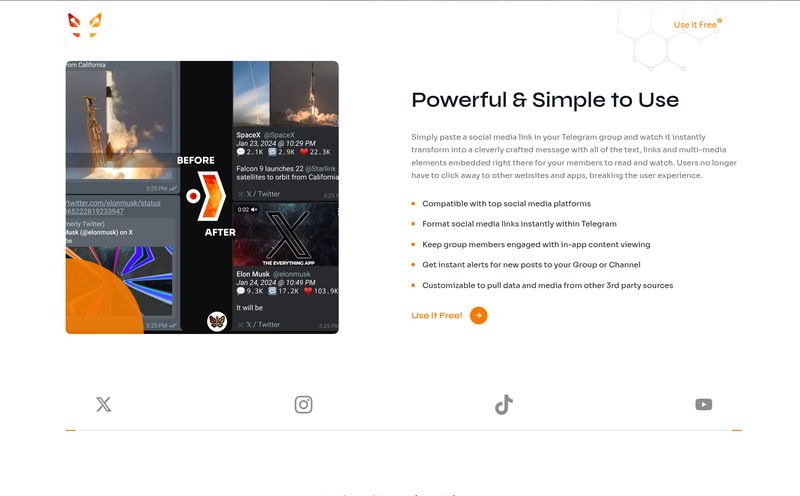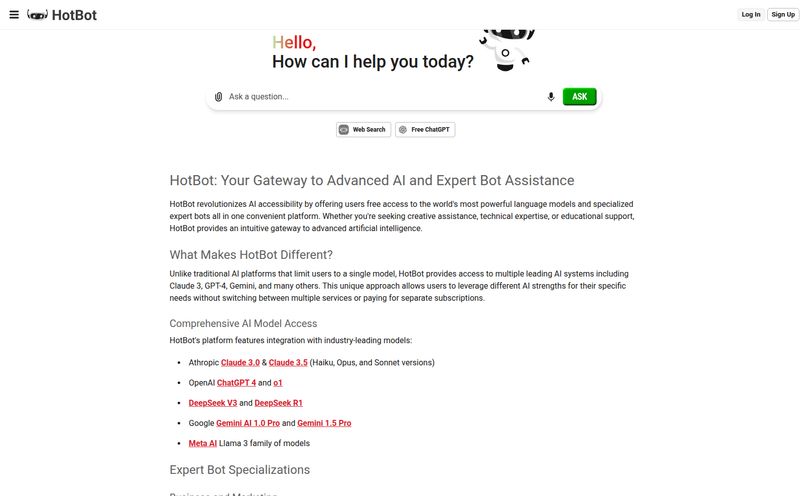Alright, let’s talk. As someone who’s been neck-deep in SEO, traffic gen, and the glorious chaos of digital tools for years, I've seen platforms come and go. Some launch with a bang and fizzle out. Others get acquired and absorbed into some tech giant. And some… well, some just seem to vanish, leaving behind a digital ghost.
Today, I want to talk about one of those ghosts: a tool called Docubro. I stumbled upon its premise recently, and it really piqued my interest. The idea was simple, elegant, and addressed a pain point that anyone with a product or a complex service knows all too well: documentation is a beast. You spend ages writing it, perfecting it, and then your users... still ask you the same questions over and over again. It’s not their fault! Who has time to read a 50-page manual to find one specific answer?
Docubro was supposed to be the answer. An AI chat assistant that you could bolt onto your website, feed it your documentation, and let it handle the user queries. A fantastic idea. But as I started digging, the story got a little weird. So, grab a coffee, and let’s piece together the story of this promising, yet seemingly vanished, AI tool.
">
What Exactly Was Docubro?
At its core, Docubro was designed to be a specialized AI chatbot. Unlike a general-purpose live chat, its entire purpose was to become an expert on your project documentation. The concept was straightforward: you let Docubro’s AI scrape your website or documentation pages. It would then digest all that information and build a knowledge base. From there, it would power a little chat widget on your site, ready to answer questions from your clients and users.
Think of it like a super-smart, always-on intern who has actually read all your manuals. Instead of a user having to manually search through pages of text, they could just ask the chatbot, “How do I reset my password?” or “What’s the API endpoint for user authentication?” and get an instant, context-aware answer. For development teams and support staff, this is the dream. It promised to slash the time spent answering repetitive questions, freeing up humans to work on, you know, the actual hard stuff.
The Features That Made It Stand Out
From what I could gather, the feature set was lean and focused, which I honestly respect. Too many startups try to be everything to everyone. Docubro knew its lane.
Its main components were the AI-powered Q&A engine and the website scraping technology. The scraper was the foundation—it had to be good enough to pull clean, relevant data from your site. The AI was the brains, responsible for understanding natural language questions and matching them to the scraped content. The whole thing was built on React, which would make developers happy, suggesting it was probably snappy and modern in its feel.
And, of course, the easy integration was a huge selling point. The promise of just dropping a snippet of code onto your site to get this functionality up and running is always a powerful draw. No massive-overhaul needed. Just plug and play. That's how you get adoption.
">
The Promise of a Quieter Inbox
I can’t tell you how many times I’ve worked with clients whose support teams are just drowning. They're stuck in a loop of answering the same five questions all day. It’s soul-crushing work, and it’s a terrible use of talented people. The biggest advantage of a tool like Docubro was clear: it would give teams their time back. By automating the first line of defense for documentation-related questions, it improves the accessibility of the information tenfold and lets your team focus on higher-value tasks.
It’s not just about efficiency, either. It’s about user experience. A user who gets an instant, correct answer from a chatbot at 2 AM is a happy user. A user who has to file a support ticket and wait 24 hours for a reply... not so much. That immediate gratification can be the difference between a loyal customer and a churn statistic.
So, What's the Catch? The Mystery Begins
No tool is perfect, and Docubro had a couple of potential snags. The first, and most obvious, is that its effectiveness lived and died by the quality of its website scraper. If the scraper pulled in messy code, navigation bars, and ad copy along with the documentation, the AI’s answers would be garbage. Garbage in, garbage out. That's a serious technical hurdle.
The other concern was the price. Let’s break down what it apparently cost.
A Look at the Pricing Structure
Based on the information available, Docubro had a pretty standard two-tiered SaaS model. It seemed reasonably priced, especially for the value it proposed.
| Plan | Price | Target Audience | Features |
|---|---|---|---|
| Individual | €20 / month | Individuals and small teams | Shared cluster, Forum support, Trial + Guarantee |
| Enterprise | €70 / month | High volume projects | Dedicated cluster, Faster response, Developer support |
At €20 a month, the entry-level plan was accessible for startups and even solo developers. The €70 enterprise plan with a dedicated cluster and faster support made sense for larger companies where response time is critical. But even a fair price can be a barrier if the product doesn’t find its market. Which brings us to the elephant in the room.
The Ghost in the Machine: Where is Docubro Now?
I went to check out `docubro.com`. And I was greeted by… a GoDaddy landing page. The domain is for sale. For $395, you can own it. Oof.

Visit Docubro
This is the digital equivalent of showing up to a new restaurant for your reservation and finding a “For Lease” sign in the window. It’s a definitive sign that something has gone wrong. Did they run out of funding? Was the tech harder to perfect than anticipated? Did they get acquired for their tech and the brand was shuttered (an "acquihire")? Or did the founders just decide to move on? We may never know for sure.
It's a stark reminder of how brutal the tech landscape can be. You can have a great idea, a solid plan, and a fair price, but if you don't get traction or you run out of runway, you can become a ghost—a GoDaddy domain sale page and a few cached articles being your only legacy.
">
Lessons from a Digital Ghost
The story of Docubro, even in its incomplete form, offers a valuable lesson. The need for smart, AI-driven documentation tools is real and growing. In fact, teh market is now flooded with alternatives. Tools like Intercom and Drift have powerful AI features, and a whole new crop of startups are focused specifically on turning knowledge bases into conversational interfaces. It’s possible Docubro was just a little too early, or got squeezed out by bigger players.
For any SaaS founder or marketer reading this, it's a cautionary tale. A great product isn't enough. You need a go-to-market strategy that’s as robust as your code. For users, it highlights the risk of adopting tools from new, unproven companies. But hey, that's the risk we take for innovation, right?
Frequently Asked Questions About Docubro
What was Docubro?
Docubro was an AI chat assistant designed specifically for websites and project documentation. It would scrape your site's content to create a chatbot that could answer user questions automatically.
How was Docubro supposed to work?
Users would integrate Docubro into their website. The tool's AI would then crawl and index the documentation pages. When a visitor asked a question in the chat widget, the AI would find and provide the relevant answer from that indexed content.
What happened to the Docubro website?
As of late 2023, the domain `docubro.com` is listed for sale on GoDaddy. This strongly suggests the service is no longer operational and the company has likely ceased to exist.
How much did Docubro cost?
Docubro had two pricing tiers: an Individual plan for €20 per month and an Enterprise plan for €70 per month, which offered dedicated resources and support.
Are there good alternatives to Docubro?
Yes, many. The market for AI-powered customer support and documentation is booming. Some popular alternatives include Intercom, Drift, Zendesk's AI features, and newer, more specialized tools like GitBook's AI search or Scribe.
Why is scraping accuracy important for a tool like this?
Because the AI's knowledge is entirely based on the scraped data. If the scraper pulls in irrelevant information (like ads, menus, or footers) or misses key content, the chatbot will provide inaccurate, unhelpful, or incomplete answers, defeating its entire purpose.
A Final Thought
So, RIP Docubro. It was a great idea, a digital mayfly that blinked in and out of existence before many of us even knew it was here. It serves as a fantastic case study in the volatile world of tech startups. The need it aimed to fill is more relevant than ever, but as we’ve seen, having the right idea is only the first step in a very, very long race. On to the next discovery.
Reference and Sources
- Information about the Docubro tool and its features was sourced from archived data.
- The domain sale status was verified directly at godaddy.com.
- Competitor information is based on general industry knowledge: Intercom and Drift.



